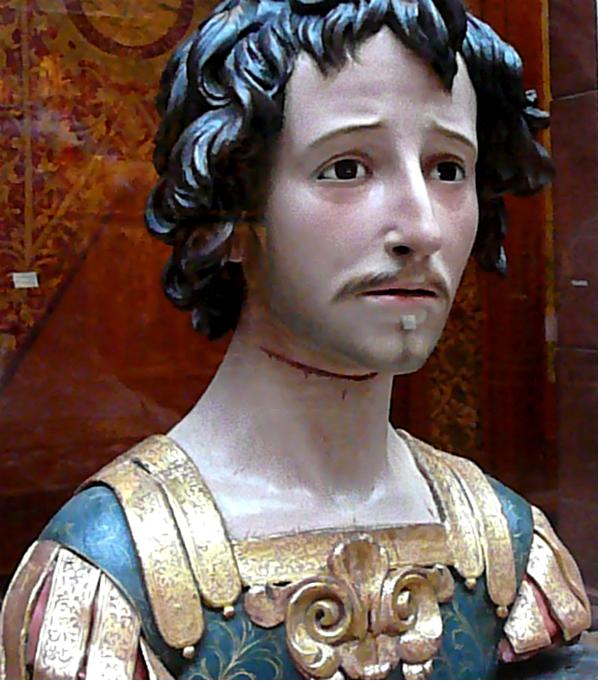Some sites on the web say images of these saints are portrayed with crowns of roses as attributes. This would consist with the rose miracles, but I have not yet found any such images.
The story has it that they died after lengthy tortures at the hands of Dion, the Roman governor of Cordoba. At one point he tells Acisclus "to think about the beauty of your youth, lest you perish." This comment may account for the manner of portraying the latter as a handsome young man, as at right. The bust shown at right also refers to the decapitation by tracing a line of blood along the neck.
Many of the tortures undergone in their story are shared with more famous figures. Like the three young men in Daniel 3 they are cast into a fiery furnace where an angel protects them. Like St. Agatha, Victoria suffers the removal of her breasts. And as in many early martyrs' tales repeated attempts to kill the saints lead only to opportunities for them to reassert the power of God and the impotence of the idols they have been urged to worship.
At the end, Victoria is killed with arrows and Acisclus is decapitated.
Prepared in 2014 by Richard Stracke, Emeritus Professor of English, Augusta University, revised 2015-09-16.

Bust of St. Acislus, 17th century (See description page)